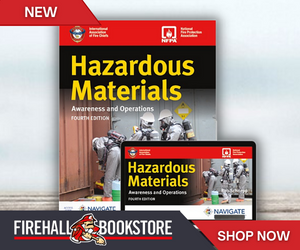| |
| |
 |
 |
| |
 |
|
@{mv_date_MMM d, yyyy}@ |
|
| |
The rising frequency and severity of natural disasters is a growing concern. In recent years, Canadians have seen extreme weather events, like floods and wildland fires, destroy homes, businesses, and critical infrastructure, and leave lasting impacts on communities right across the country. As Canada and the world continue to experience these disasters, it is crucial to increase risk awareness across all sectors of society and to inform decision-making for reducing, preparing for, and responding to them.
» Read More...
Funerals for two Quebec volunteer firefighters who died earlier this month during flash floods in the Charlevoix region will be private affairs. The municipality of St-Urbain, northeast of Quebec City says the families of both Regis Lavoie, 55, and Christopher Lavoie, 23, wanted to proceed with simple services in the image of the two fallen men and did not want civic funerals.
» Read More...
Saskatoon Police and Fire came together Saturday, hoping to inspire women to work in emergency services. The two services hosted Explore YXE, allowing participants to see what police officers and firefighters do on a daily basis.
» Read More...
The province is chipping in $700,000 to support four innovative and free training projects designed for 203 professional and volunteer firefighters across Ontario. The training will be aimed at battling blazes in hazardous (Mayday) situations for small and rural services to make sure they are equipped and ready for ground rescue and wildfire scenarios.
» Read More...
|
| |
|
| |

A fire fighter's ability to recognize an incident involving hazardous materials or weapons of mass destruction (WMD) is critical. They must possess the knowledge required to identify the presence of hazardous materials and WMD, and have an understanding of what their role is within the response plan. Hazardous Materials: Awareness and Operations, Fourth Edition provides fire fighters and first responders with these essential skills and enables them to keep themselves and others safe while mitigating potentially deadly incidents.
Revised and updated to meet new NFPA 470 standards and peer reviewed, by experts in the field.
» Order your copy today! |
| |
|
| |
 At Waterloo Fire Rescue, I am fortunate enough to work with one of the leaders of the International Association of Fire Fighters (IAFF) Peer Fitness Initiative Team, Luke Pederson. He has a super progressive mind and is a true pioneer in firefighter health and fitness. Our stations are posturized with small tidbits of useful information from the IAFF on everything to help us all lead and live healthier, happier lives. By Patrick Mathieu.
» Read More...
At Waterloo Fire Rescue, I am fortunate enough to work with one of the leaders of the International Association of Fire Fighters (IAFF) Peer Fitness Initiative Team, Luke Pederson. He has a super progressive mind and is a true pioneer in firefighter health and fitness. Our stations are posturized with small tidbits of useful information from the IAFF on everything to help us all lead and live healthier, happier lives. By Patrick Mathieu.
» Read More... |
| |
 All too often we get caught up with the skills that relate to specific types of rescues. We see this not only in training but also in how we operate on scene. It’s easy to get caught up in the tools and techniques that engage all of us so much in the world of technical rescue. By Chad Roberts.
» Read More...
All too often we get caught up with the skills that relate to specific types of rescues. We see this not only in training but also in how we operate on scene. It’s easy to get caught up in the tools and techniques that engage all of us so much in the world of technical rescue. By Chad Roberts.
» Read More... |
| |
| |
|
| |
A new online dashboard being tested in B.C. fire departments is transforming fire data and other statistics into an interactive, site-specific roadmap for reducing fire injury and death. By Rebecca Kong and Len Garis.
» Read More...
|
At the 2022 Atlantic Fire Leadership Conference, Dr. Robert Krause shared the findings of his study into 176 LODD firefighter fatalities. The top two reasons, accounting for 75 per cent of the loss of life, were sub-optimal personnel readiness and inadequate preparation for/anticipation of adverse events on the fire ground. His bottom line: “Training is the way out of this.” By Laura Aiken.
» Read More...
|
| |
| FIRE FIGHTING IN CANADA: THE PODCAST |
|
|
| |
 Toronto’s Fire Chief Matthew Pegg joins Fire Fighting in Canada: The Podcast to talk about the department’s latest recruitment; the qualifications, courage and motivation of today’s candidates; the importance of connecting with and supporting your members, and why large fire services can and do learn from small departments.
» Listen now
Toronto’s Fire Chief Matthew Pegg joins Fire Fighting in Canada: The Podcast to talk about the department’s latest recruitment; the qualifications, courage and motivation of today’s candidates; the importance of connecting with and supporting your members, and why large fire services can and do learn from small departments.
» Listen now
|
|
| |
|
| |
|
|
| |
| |






